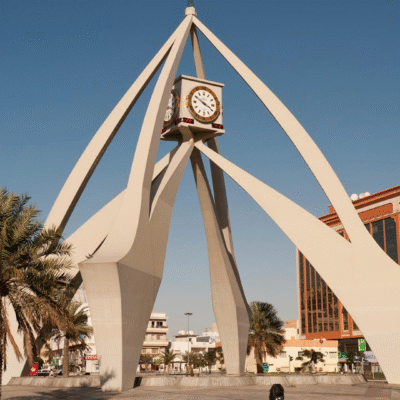Rajasthan Tourism: Culture, Colors, and Heritage in Every Corner
Rajasthan Tourism is more than a travel plan—it’s a walk through time. Known for its forts, palaces, deserts, fairs, and royal charm, Rajasthan offers a timeless experience built on centuries of Rajput glory and desert resilience. This detailed guide dives deep into the heart of Rajasthan Tourism, covering every must-see city, tradition, architectural wonder, and cultural detail—without using cliché words or promotional fluff.
Why Rajasthan Tourism Holds a Special Place
Rajasthan means “Land of Kings,” and the name fits perfectly. Every district tells a story of rulers, warriors, poets, artisans, and deeply rooted customs. What sets Rajasthan Tourism apart is not just the scale of monuments or the size of deserts—but the sense of continuity. In Rajasthan, history isn’t behind glass; it’s alive in folk songs, camel fairs, temple bells, and mud forts still standing strong.
Jaipur: The City Built with Precision and Pride
Rajasthan’s capital, Jaipur, is one of the first planned cities of India. Designed by architect Vidyadhar Bhattacharya, Jaipur’s streets follow a grid pattern—a rare feature in 18th-century India.
-
Amber Fort: Perched on a hill, this massive structure reflects Rajput architecture mixed with Mughal elements. The Sheesh Mahal (Mirror Palace) inside is iconic.
-
Hawa Mahal: The “Palace of Winds” with its lattice windows allowed royal women to observe street life without being seen.
-
City Palace & Jantar Mantar: Both are centrally located and offer glimpses into astronomy, art, and daily life of the royals.
Jaipur also boasts traditional textiles, block printing, handmade mojris, and blue pottery—essentials to experience as part of Rajasthan Tourism.
Udaipur: Reflections of Royal Elegance
Udaipur is known as the “City of Lakes,” and rightly so. Surrounded by the Aravalli Hills, the city’s landscape is serene and regal.
-
Lake Pichola & City Palace: Boat rides in the evening offer unmatched views of the palace’s reflection in the water.
-
Jagdish Temple and Saheliyon ki Bari reflect cultural depth beyond royal grandeur.
-
The white marble Jag Mandir and Lake Palace create postcard-perfect moments, but their real charm lies in their stillness and symmetry.
Rajasthan Tourism always highlights Udaipur for its romantic appeal, and rightly so—it’s quieter, graceful, and rooted in aesthetics.
Jodhpur: The Fort that Rules the Blue City
Jodhpur rises out of the desert with its massive Mehrangarh Fort. Unlike many tourist cities, Jodhpur’s energy is raw and earthy.
-
Mehrangarh Fort: Standing 400 feet above the city, it is both a museum and a view deck for the blue-painted homes below.
-
Umaid Bhawan Palace: Still part-residence to the royal family, this structure shows how heritage and modern life merge.
-
Clock Tower and Sardar Market: Ideal for picking up spices, antiques, and Jodhpuri footwear.
In the Rajasthan Tourism circuit, Jodhpur holds an important position for those seeking real heritage without too much polish.
Jaisalmer: Where the Desert Breathes
The golden city of Jaisalmer is a fortress that emerges from the Thar Desert. Its sandstone buildings glow under the sun, and the desert winds carry sounds of folk music.
-
Jaisalmer Fort: One of the few living forts in the world, it houses shops, hotels, and homes inside its walls.
-
Sam Sand Dunes: Camel rides, desert camping, and folk performances make this a true desert experience.
-
Havelis like Patwon Ki Haveli and Nathmal Ki Haveli are intricate, ornate, and full of historical references.
When people think of Rajasthan Tourism, this image of camel caravans and sunset sand dunes often leads the mind.
Bikaner: Forts, Snacks, and Camel Festivals
Bikaner isn’t always the first name that pops up, but that’s what makes it special. It’s less crowded and more rooted in traditional daily life.
-
Junagarh Fort: Unlike other forts, this one wasn’t built on a hill, which makes its design different and interiors more accessible.
-
National Research Centre on Camel: A must-visit for camel milk-based coffee, soaps, and a unique look into desert animal life.
-
Bikaner is also known for its spicy snacks—bhujia, namkeen, and sweets like rasgullas made with pure ghee.
As part of Rajasthan Tourism, Bikaner offers a taste of both military history and culinary richness.
Pushkar: Pilgrimage, Markets, and Cattle Fairs
Pushkar is unique. It’s one of the few places in the world with a temple dedicated to Lord Brahma. But beyond religion, Pushkar plays a key role in Rajasthan’s annual tourism rush due to its world-famous fair.
-
Pushkar Lake: Surrounded by 52 ghats, this lake is believed to be sacred.
-
Pushkar Camel Fair: Held every year in November, this event sees thousands of camels, horses, and cattle in a lively trading setup.
-
Street Markets: Perfect for buying silver jewelry, leather notebooks, and bohemian fashion.
Rajasthan Tourism thrives on such dual identities—sacred yet loud, peaceful yet energetic.
Mount Abu: Rajasthan’s Only Hill Retreat
Amid all the sand and heat, Mount Abu stands out as a green, elevated paradise.
-
Dilwara Temples: Jain temples carved out of white marble with astonishing precision. They’re not just religious sites but architectural marvels.
-
Nakki Lake: Great for boat rides, picnics, and cool breeze experiences.
-
Sunset Point and Toad Rock: These spots offer panoramic views and relaxed moments.
Mount Abu is Rajasthan’s break from desert life. It completes the Rajasthan Tourism experience with balance and cool air.
Fairs, Food, and Festivals that Define the State
Cultural Events
-
Desert Festival, Jaisalmer
-
Teej Festival, Jaipur
-
Gangaur, Udaipur and Jaipur
-
Marwar Festival, Jodhpur
Famous Dishes
-
Dal Baati Churma
-
Ker Sangri
-
Gatte ki Sabzi
-
Laal Maas
-
Ghewar and Balushahi
Rajasthan Tourism flourishes year-round because every season has its own events and flavors. Even summer offers camel festivals and off-season serenity.
Shopping in Rajasthan: From Streets to Royal Courtyards
-
Jaipur: Precious stones, block-printed fabrics, and blue pottery.
-
Jodhpur: Leather goods, antiques, and bandhej turbans.
-
Udaipur: Miniature paintings, silver art, and marble artifacts.
-
Bikaner: Hand-woven woolens, lacquer bangles.
-
Jaisalmer: Embroidered items, camel leather bags, and puppets.
Whether you are shopping for art or souvenirs, Rajasthan Tourism gives you access to skills passed through generations.
Rural Rajasthan: Villages Where Life Still Walks
Rajasthan’s real soul lives in its villages.
-
Mandawa (Shekhawati region): Known for its painted havelis.
-
Kumbhalgarh: Beyond the fort, the tribal belt around it remains raw and untouched.
-
Osian: An oasis with ancient temples and sand around.
Tourism here supports rural artisans, musicians, and eco-stay communities. This aspect of Rajasthan Tourism remains underrated but authentic.
Planning Tips for Rajasthan Tourism
-
Best Time to Visit: October to March. Desert heat is bearable and festivals are frequent.
-
Transport: Trains connect most cities well. Internal flights save time. Road travel is scenic, especially from Jaipur to Jodhpur and Udaipur.
-
Stay Options: Ranging from heritage hotels and palace resorts to budget homestays and desert camps.
-
What to Carry: Light cottons, sunscreen, traditional wear if visiting temples, a water bottle, and local currency for smaller towns.
Conclusion: Why Rajasthan Tourism Leaves a Lasting Mark
The strength of Rajasthan Tourism lies in its contrasts. You’ll find painted palaces beside dusty markets, silent temples beside folk dances, and warriors’ tales told by puppet shows. What looks like ancient architecture on the outside is still someone’s home, workshop, or shrine on the inside.
Rajasthan is not just to be seen—it’s to be felt, tasted, heard, and remembered. No matter how many times you visit, there’s always more to learn from this land of layers.





